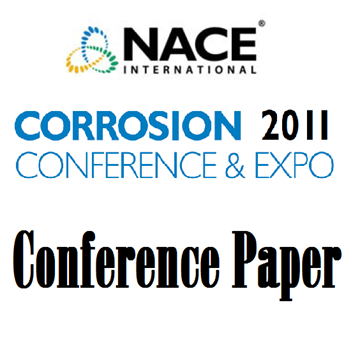Search
10275 Corrosion Inhibitor Development for Slightly Sour Environment with O2 Intrusion
Also Purchased
10278 A Parametric Study of Sour Corrosion of Carbon Steel
Product Number:
51300-10278-SG
ISBN:
10278 2010 CP
Publication Date:
2010
$20.00
11120 Sulfur Corrosion Due To Oxygen Ingress
Product Number:
51300-11120-SG
ISBN:
2011 11120 CP
Publication Date:
2011
$20.00
02270 Corrosion Consequences of Oxygen Entry Into Oilfield Brines
Product Number:
51300-02270-SG
ISBN:
02270 2002 CP
$20.00




